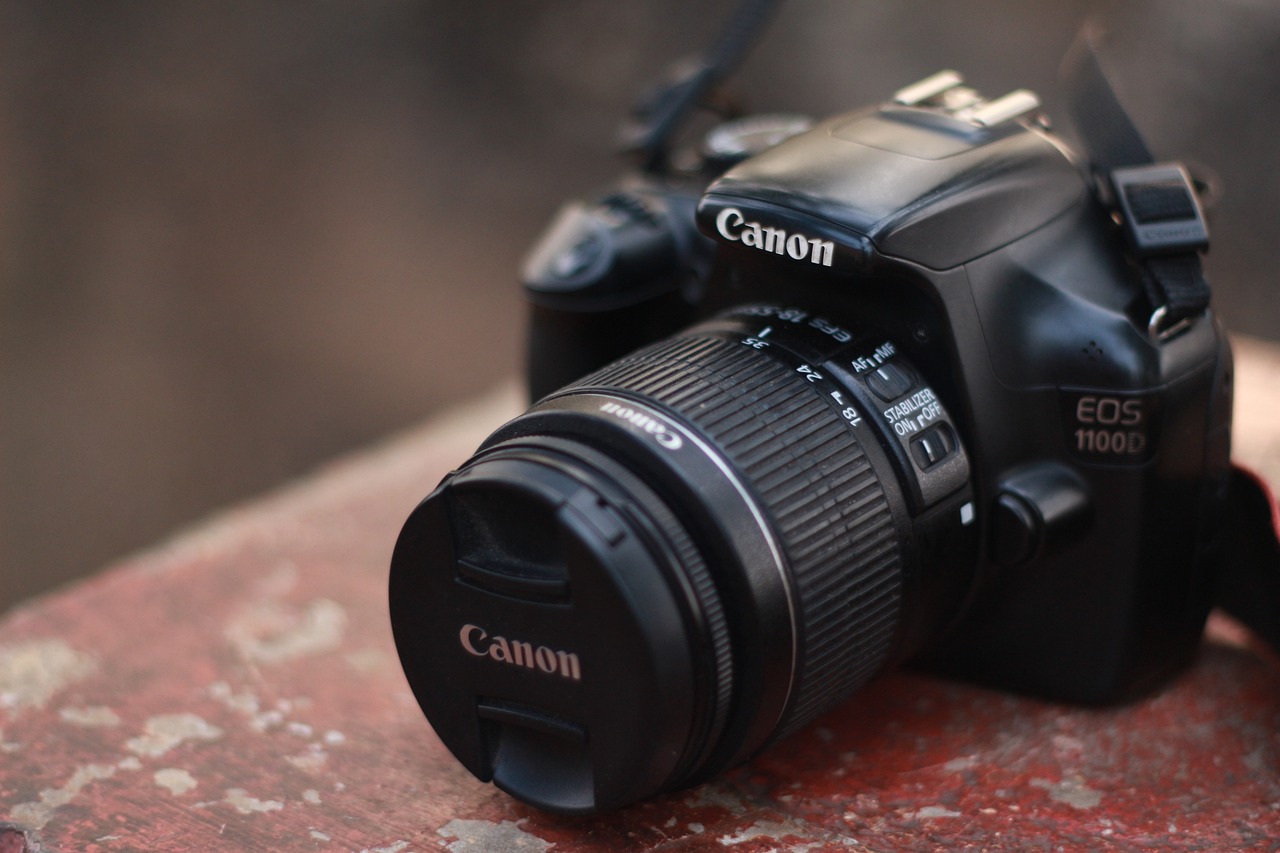Introduction
In the ever-evolving world of photography, each year brings new advancements and innovations that excite both professional photographers and enthusiasts alike. As we embark on the journey that is 2023, the camera industry is poised to unveil a lineup of exciting new cameras that promise to push the boundaries of what is possible in the world of photography.
Panasonic Lumix S5 II: A Full-Frame Wonder
The Panasonic Lumix S5 II, the successor to the highly acclaimed Lumix S5, is one of the most anticipated camera releases of 2023. Known for its versatility and affordability, the Lumix S5 has been a favorite among photographers who value both stills and video capabilities. Rumored to be announced at the CP+ conference in Japan, the Lumix S5 II is expected to improve upon its predecessor in several key areas.
One area of improvement is the electronic viewfinder (EVF). The current Lumix S5 features a 2.36M-dot EVF, but rumors suggest that the S5 II will boast a higher resolution EVF, providing photographers with a more immersive shooting experience. Additionally, photographers have expressed a desire for improved video capabilities, particularly the ability to shoot 4K at 60 frames per second (fps). The Lumix S5 is currently limited to 4K/30p, so an upgrade to 4K/60p would be a significant improvement.
Sony A9 III: A Sports Shooter’s Dream
The Sony A9 III is the latest addition to Sony’s highly regarded A9 series, known for its exceptional speed and performance. While originally slated for release in 2021, the global chip shortage pushed back its announcement to the first half of 2023. Designed with sports photographers in mind, the A9 III is expected to incorporate several key improvements from the flagship Sony A1.
One of the most anticipated upgrades is the improved handling of strobing lighting and reduced rolling shutter effect. These enhancements will allow photographers to capture fast-moving subjects with greater precision and accuracy. Additionally, the A9 III is rumored to feature a burst shooting rate of 30 frames per second (fps) blackout-free, offering photographers the ability to capture the perfect moment in high-speed action.
DJI Air 3: Taking Aerial Photography to New Heights
Drones have become an essential tool for photographers, allowing them to capture breathtaking aerial shots that were once only possible with expensive and cumbersome equipment. DJI, a leader in the drone industry, is set to release the DJI Air 3, the successor to the popular DJI Air 2S. Positioned as a mid-sized, mid-range drone, the Air 3 is expected to offer significant improvements over its predecessor.
One area of improvement is the flight time. The Air 2S currently offers a flight time of 31 minutes, which is relatively short compared to other drones on the market. The Air 3 is rumored to feature a significantly longer flight time, allowing photographers to capture more footage before needing to land the drone for a battery change. Additionally, the Air 3 may feature a better camera, potentially incorporating a 1-inch sensor for improved image quality and low-light performance.
Fujifilm X-T40: A Compact Powerhouse
Fujifilm’s X-T series has gained a strong following among photographers who value compact size without sacrificing image quality and performance. The X-T30 II, released in September 2021, has been praised for its versatility and affordability. However, rumors suggest that Fujifilm is already working on the X-T40, which is expected to build upon the success of its predecessor.
One of the most anticipated improvements for the X-T40 is the ability to shoot 4K video at 60 frames per second (fps). The X-T30 II is currently limited to 4K/30p video, so an upgrade to 4K/60p would provide videographers with greater flexibility and smoother motion capture. Additionally, photographers are hoping for the inclusion of in-body image stabilization (IBIS), a feature that has been well-received in other Fujifilm camera models. IBIS would allow photographers to capture sharper images, particularly in low-light conditions or when shooting handheld.
GoPro Max 2: Capturing Immersive 360-Degree Content
GoPro has been a pioneer in the action camera market, and the GoPro Max 2 is expected to continue the company’s tradition of innovation. As the successor to the GoPro Max, released in 2019, the Max 2 is rumored to offer several significant improvements in both hardware and software.
One of the most anticipated upgrades is the ability to shoot 4K “flat” footage, similar to a standard GoPro camera. The original GoPro Max is limited to 1080p, which can be a drawback for users who require higher-resolution footage. Additionally, the Max 2 may incorporate sensor-based HDR video, a feature that can greatly enhance the dynamic range of 360-degree video. This improvement would allow users to capture more detail in both bright and dark areas of their footage, resulting in a more visually stunning final product.
Sony A7000: A Fresh Start for APS-C
Sony’s APS-C format has seen limited attention in recent years, with the company focusing primarily on its full-frame offerings. However, rumors suggest that Sony is preparing to release the A7000, a camera that could mark a fresh start for APS-C in Sony’s lineup. Designed as a smaller and lighter alternative to their full-frame cameras, the A7000 is expected to pack Sony’s renowned autofocus technology into a more affordable package.
One of the most anticipated features of the A7000 is its autofocus system. Sony’s autofocus technology is widely regarded as one of the best in the industry, offering fast and accurate subject tracking. By incorporating this technology into the A7000, Sony aims to provide photographers with a high-performance APS-C camera that can compete with its full-frame counterparts. Additionally, the A7000 may feature 4K/60p video capabilities, allowing videographers to capture smooth and detailed footage.
Leica Q3: The Epitome of Elegance and Image Quality
Leica’s Q series has long been synonymous with elegance and exceptional image quality. The Leica Q2, released in 2019, impressed photographers with its full-frame sensor and stunning image quality. Rumors suggest that Leica is preparing to unveil the Q3, codenamed “Wilson,” in 2023, promising further advancements in image quality and performance.
One area of improvement for the Q3 is the resolution of the electronic viewfinder (EVF). The Q2 features a 3.68-million-dot EVF, but rumors suggest that the Q3 may boast an even higher resolution EVF, providing photographers with a more detailed and immersive shooting experience. Additionally, photographers are hoping for the ability to record video with the Q3, a feature that was absent in the Q2. By incorporating video capabilities, Leica would be able to appeal to a wider range of photographers and videographers.
Canon EOS R50: Bridging the Gap between EF-M and RF
Canon’s EOS R50 is expected to be a significant release in 2023, bridging the gap between Canon’s EF-M and RF lens mount systems. Positioned as a more affordable mirrorless camera, the R50 is rumored to offer a compelling option for photographers who are looking to upgrade from the Canon EOS M50 Mark II or enter the world of mirrorless photography.
One of the most anticipated features of the R50 is its sensor. While details are still scarce, the R50 is expected to feature a 24MP sensor, providing photographers with excellent image quality and versatility. Additionally, the R50 may offer 4K/60p video capabilities, allowing videographers to capture high-quality footage with smooth motion. By combining these features with Canon’s renowned color science, the R50 has the potential to be a popular choice among both photographers and videographers.
iPhone 15: Pushing the Boundaries of Smartphone Photography
While not a dedicated camera, the iPhone has become a powerful tool for photographers, offering impressive image quality and a wide range of features. The iPhone 15, expected to be released in September 2023, is rumored to bring significant improvements to its camera system, solidifying its position as one of the best point-and-shoot cameras on the market.
One of the most exciting rumored features of the iPhone 15 is the inclusion of a periscope zoom camera. This technology, already utilized in some Android smartphones, allows for impressive zoom capabilities in a compact form factor. The iPhone 15 is expected to feature a 1/3-inch 12MP sensor and offer up to 6x zoom, providing users with greater flexibility when capturing distant subjects. Additionally, the iPhone 15 may incorporate a stacked CMOS design, enhancing its low-light performance and dynamic range.
Conclusion
As we enter the year 2023, the camera industry is poised to unveil a lineup of innovative and exciting cameras that are sure to capture the imagination of photographers and enthusiasts around the world. From the versatile Panasonic Lumix S5 II to the groundbreaking iPhone 15, each camera offers unique features and capabilities that push the boundaries of what is possible in photography. Whether you are a professional photographer or an enthusiast looking to capture your next great shot, the cameras of 2023 are sure to inspire and empower you in your creative journey.


No comments! Be the first commenter?